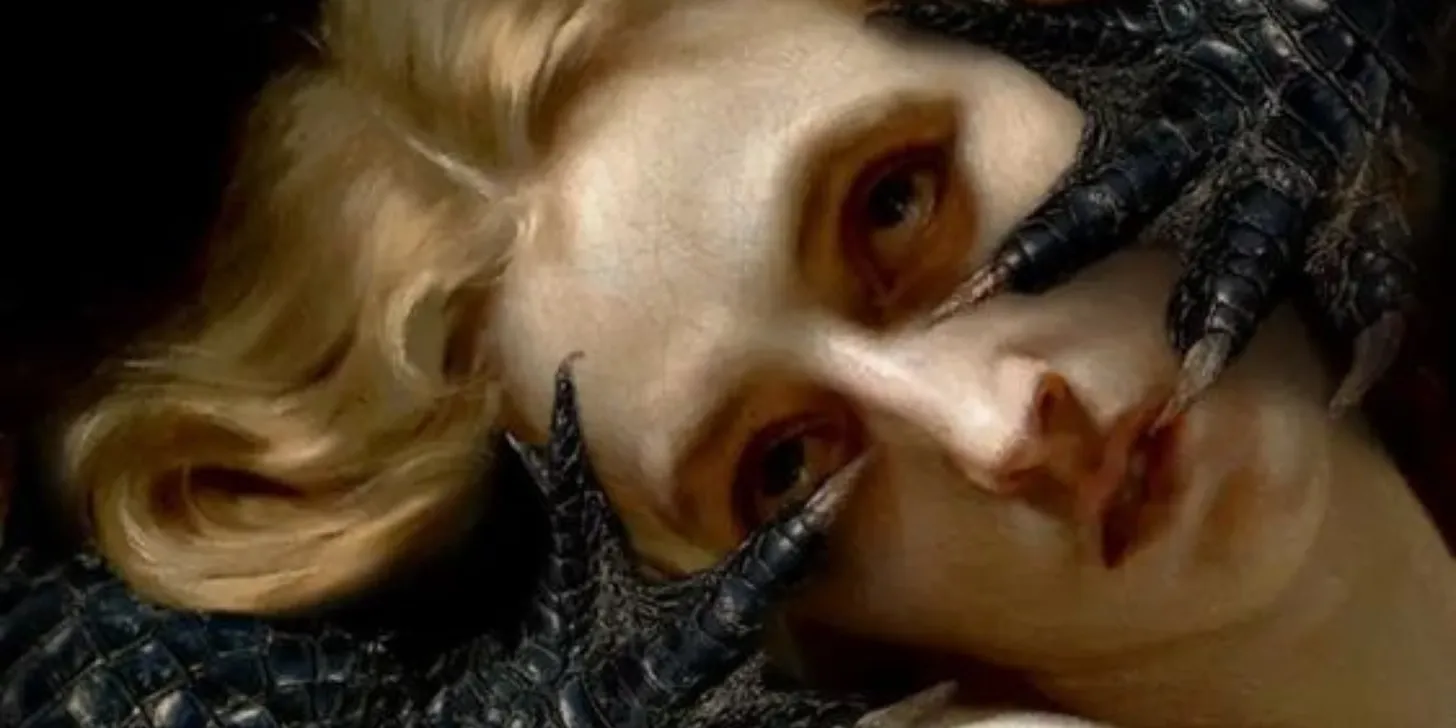
How does the anima and animus show up in relationships?
The concept of the anima and animus is one of the most enduring and influential ideas to emerge from the work of Swiss psychiatrist Carl Jung. In this post, we’ll take a deep dive into the anima/animus theory, exploring its origins, evolution, and practical applications in intimate relationships and family systems.
We’ll see how Jung’s original formulation of the anima/animus was expanded upon by his proteges and successors, and consider criticisms and revisions of the theory from contemporary Jungian thinkers. Throughout, we’ll ground our discussion in real-world examples and case studies that illustrate how the anima and animus shape our lived experience of love, sex, and partnership.
By the end, readers will come away with a nuanced understanding of this complex Jungian concept and insight into how to apply it for personal growth and relational healing. So without further ado, let’s dive in to the mysterious world of the anima and animus.
Jung’s Original Formulation
Carl Jung first introduced the concepts of the anima and animus in his 1925 essay “Marriage as a Psychological Relationship”. He defined the anima as the unconscious feminine side of a man and the animus as the unconscious masculine side of a woman.
For Jung, the anima/animus represented the contrasexual soul image – the psychological qualities of the opposite gender that he believed existed within every individual. He saw these inner figures as rooted in the collective unconscious, the universal psychic substrate that all humans share.
Jung observed that the anima and animus were typically projected onto one’s romantic partner. A man will fall in love with a woman who embodies his anima image, while a woman will choose a mate who carries her animus projection. Jung wrote:
“Every man carries within him the eternal image of woman, not the image of this or that particular woman, but a definite feminine image. This image is fundamentally unconscious, an hereditary factor of primordial origin engraved in the living organic system of the man, an imprint or ‘archetype’ of all the ancestral experiences of the female, a deposit, as it were, of all the impressions ever made by woman.”
He described a parallel animus image in the female psyche. For Jung then, romantic attraction was in large part an unconscious phenomenon driven by the psyche’s yearning to integrate the contrasexual archetype.
However, he cautioned that projecting one’s anima or animus onto a flesh-and-blood partner could lead to trouble. Jungian analyst M. Esther Harding explains:
“Projection of the anima or animus onto the partner is dangerous because one then tries to force the partner to act in a certain way which has nothing to do with his or her real personality. One tries to make the partner conform to what is demanded by the projection, and this often leads to great difficulties and misunderstandings in marriage.”
The key, for Jung, was to withdraw one’s projections and integrate the anima/animus within one’s own psyche. This inner sacred marriage was an essential part of the individuation process – Jung’s term for the lifelong journey towards wholeness and self-realization.
Post-Jungians on the Anima and Animus
In the decades since Jung’s death, many Jungian analysts have built upon, revised, and in some cases argued against the anima/animus concept. Let’s survey some of the key post-Jungian perspectives:
Erich Neumann and the Stages of Anima Development
Erich Neumann was one of Jung’s most brilliant students and an influential thinker in his own right. In his book The Origins and History of Consciousness, Neumann laid out a developmental model for the anima and animus.
According to Neumann, the anima progresses through four archetypal stages in a man’s psyche:
- Eve, the instinctual, biological aspect
- Helen, the romantic, aesthetic aspect
- Mary, the spiritual, religious aspect
- Sophia, the wise, integrated aspect
Neumann saw an analogous developmental sequence for the animus in women:
- The muscular, powerful figure
- The man of action and romance
- The bearer of the word, the professor
- The wise spiritual guide
For Neumann, psychological maturity meant evolving one’s anima/animus through these stages towards the fully realized Sophia/Wise Man. However, most people get stuck at earlier levels, which leads to immaturity in relationships.
A man fixated at the Eve stage will relate to women in a primarily sexual, body-based way without appreciating them as full people. A woman identified with the “man of action” animus will compulsively seek out hyper-masculine partners and denigrate the softer, emotional sides of men.
By understanding these anima/animus levels, we can diagnose where we may be stuck and consciously evolve our inner contrasexual image towards integration and wholeness.
James Hillman’s Critique of the Gendered Anima/Animus
James Hillman, the founder of archetypal psychology, took issue with Jung’s binary conception of the anima and animus. He felt that rigidly aligning the anima with stereotypical feminine traits and the animus with classically masculine qualities enforced limiting gender norms.
In his 1985 essay “Anima: An Anatomy of a Personified Notion,” Hillman argued for decoupling the anima/animus from biological sex. He reconceived the anima as the archetype of psychic interiority, regardless of gender. The animus, in contrast, represented the archetype of external engagement with the world.
For Hillman, contrasexuality was metaphorical, not literal. We all contain inner ‘masculine’ and ‘feminine’ qualities, but these have more to do with our preferred modes of being (e.g. action vs. reflection) than our genitals or secondary sex characteristics.
Hillman’s reformulation helped free the anima/animus concept from the prison of gender essentialism. It allowed for more nuanced, spectrum-based understandings of psychological femininity and masculinity. His work paved the way for contemporary non-binary, trans, and genderfluid readings of Jung.
Criticism and Revision from Feminist Jungians
Jung’s original anima/animus theory has understandably come under fire from feminist thinkers, both within and outside the Jungian community. A common critique is that Jung projected his own limited, patriarchal notions of gender onto the collective unconscious.
For example, Jungian analyst Polly Young-Eisendrath argues that Jung overly idealized the feminine while denigrating real flesh-and-blood women. She writes:
“There is a big gap between Jung’s fantasy-image of woman and his experiences of real women. The ‘anima’ is a psychological complex that Jung generalized to all men, but it may be better understood as Jung’s personal complex.”
Other feminist Jungians have sought to revise rather than discard the anima/animus idea. Analyst Naomi Goldenberg proposed that all people have both an anima and an animus within their psyche, regardless of their sex or gender identity.
In her model, the anima represents our capacity for affiliation and relatedness, while the animus embodies our ability to take action and make an impact on the world. Goldenberg’s framework frees the anima/animus from strict gender binaries, allowing for more fluid and inclusive interpretations.
Anima and Animus Possession: When the Unconscious Takes Over
One of Jung’s most valuable insights was how the anima and animus can overtake the conscious personality, a phenomenon he called possession. When a person is seized by their anima/animus, they become completely identified with the qualities of the contrasexual archetype.
A man possessed by his anima may become moody, irrational, and prone to outbursts of emotion. He may find himself “in the grip” of his unconscious feelings and lose his powers of clear thinking and decisive action.
Analyst Jasbinder Garnermann describes it this way: “In a man, possession manifests as moodiness, sentimentality, effeminacy, and oversensitivity. He becomes touchy and irritable, with only a thin veneer of good will on the surface.”
Conversely, a woman in the throes of animus possession may come across as harshly critical, rigidly opinionated, or aggressively domineering. She may be full of fiery assertions and unshakable convictions, while being cut off from her more receptive, nurturing side.
Marie-Louise von Franz provides a vivid description:
“In women the negative animus can appear as a cloaked figure, often an uncouth ruffian or a demon who whispers horrible ideas in the woman’s ears. He makes her say spiteful, malicious things that discredit her and make her feel like a failure.”
When the anima or animus takes over, it’s as if an alien force has colonized the personality from within. The possessed person may say and do things entirely “out of character,” things they would never consciously choose.
At the same time, anima/animus possession is often incredibly compelling, even seductive. Because the activated archetype carries such a strong emotional charge, the possessed person may feel extraordinarily alive, ecstatically swept up in the grips of a seemingly higher power.
This is why possession states are so dangerous and destructive when they seize a couple in a relationship. Both partners may get hooked on the intensity, the passion, the larger-than-life feelings that anima/animus mergence generates – even as the relationship grows increasingly volatile and explosively conflictual.
Jungian analyst Robert Johnson provides an instructive case study of anima/animus possession in a marriage in his book We: Understanding the Psychology of Romantic Love.
Johnson worked with a couple, “Jack and Betty,” who fell in love at first sight and impulsively married after knowing each other only a few months. At first, their relationship felt magically fated – it was as if they had always known each other, like they completed each other in every way.
But before long, trouble arose. Jack started to feel suffocated by the constant emotional tumult of the marriage. He felt like he was losing himself, drowning in a sea of irrational hurt feelings and unending relational processing.
Betty, for her part, began to resent Jack’s increasingly distant, conflict-avoidant stance. She doubled down on her efforst to force an emotional connection, driving Jack further into stonewalling and withdrawal.
In Johnson’s analysis, Jack and Betty had fallen into an intense anima/animus possession. Jack’s anima, the archetype of eros and relatedness, was projected lock, stock, and barrel onto Betty. Meanwhile, Betty’s animus – her inner masculine – was hooked by Jack’s strong, dependable facade.
But as with all such possession states, the projections eventually shattered against the sobering realities of their human limitations. Jack wasn’t an invulnerable pillar of strength, as Betty’s animus image craved. And Betty couldn’t provide the perfectly attuned, unconditional love of Jack’s anima fantasy.
The couple spiraled into increasingly volatile fight cycles, with Jack exploding in defensive rages and Betty attacking with tears and recrimination. The relationship became a living hell, as each partner unconsciously sought to force the other to embody their projected anima/animus ideal.
It was only through painstaking shadow work in therapy that Jack and Betty began to reclaim their projections. Jack learned to bear his own vulnerable, ‘feminine’ feelings, rather than placing the burden of his emotionality onto Betty.
And Betty developed her ‘masculine’ capacity to tolerate conflict and soothe herself, rather than demanding that Jack play the role of her unflappable rock. Gradually, the couple disentangled from their mutual possession and learned to love each other as real, limited, gloriously imperfect human beings.
Johnson’s case study vividly illustrates both the perils of anima/animus possession and the potential for personal and relational growth when projections are reclaimed. While the path isn’t easy, withdrawing one’s anima/animus can transform the compulsive, fated quality of romantic love into something more conscious, choiceful, and ultimately fulfilling.
Anima/Animus in Same-Sex Relationships
Jung conceived of the anima/animus as an innate, biologically based structure rooted in complementarity between the sexes. But what are we to make of this theory in light of homosexual romance and partnership?
Clearly, Jung’s overt heteronormativity is problematic and outdated from a contemporary perspective. However, many Jungian thinkers have argued that the anima/animus concept can still shed light on the workings of same-sex love.
Jungian therapist Mitch Walker, himself a gay man, has written extensively on the gay animus and the lesbian anima. Walker defines the gay animus as “the projected carrier of the capacity for same-sex intimacy, union, and affiliation” and the lesbian anima as “the projected carrier of the capacity for same-sex emotional attunement and receptivity.”
In other words, gay men still project their own inner eros and vulnerabilities onto male partners, while lesbians project their inner masculine and powers of focused action into female beloveds. The dynamics of possession, projection, and reclaiming the shadow play out similarly, regardless of the genders involved.
At the same time, Walker and other queer Jungians argue that the anima/animus takes on unique forms and flavors in LGBT+ people. Because queer folks have already had to wrestle with otherness and marginalization around their identity, they may have more flexible, spectrum-based experience of their inner ‘masculine’ and ‘feminine’ energies.
A gay man in touch with his anima may find it easier to access receptive, affiliative states, having gone through the initiatory fires of coming out in a heterosexist society. Similarly, a lesbian attuned to her animus may have a leg up in developing a strong, action-oriented core, having had to assert herself in the face of homophobia and misogyny.
In this sense, queer people’s lived experience of grappling with non-normative identities can yield hard-won psychological gold when it comes to anima/animus integration. The contamination of same-sex love in our culture may paradoxically lay the groundwork for more fluid, nuanced experience of inner contrasexuality.
Of course, this doesn’t negate the very real pain and trauma that many LGBT+ people carry as a result of familial and societal rejection, stigma, and abuse. And it doesn’t imply that all queer folks are somehow psychologically advanced or superior in their anima/animus development.
But it does suggest that there may be unique lessons and stories to be gleaned from studying contrasexual archetypes through a queer lens. By considering how the anima/animus shows up in same-sex relationships, we can expand and deepen Jung’s original masculine/feminine binary and render the concepts more inclusive and contemporary.
The Anima/Animus in Deception and Betrayal
Because the anima and animus typically operate outside conscious awareness, they tend to drive some of our most irrational, “out of character” behaviors in relationships. Nowhere is this more painfully apparent than in dynamics of deception and betrayal between partners.
When a person cheats on their spouse, either sexually or emotionally, it’s often the anima/animus pulling the strings behind the scenes. The allure of the romantic shadow hook can override one’s conscious values, leading otherwise loyal partners to engage in destructively transgressive acts.
Feminist Jungian analyst Arlene Diane Landau has written extensively on the role of the anima in men’s infidelity. According to Landau, the anima represents a man’s unconscious, disavowed neediness and dependence – the little boy inside still longing for the perfect, unconditionally adoring mother.
Because this vulnerable child energy is so taboo in our patriarchal culture, many men exile their need for feminine nurturance to the margins of their psyche. There it remains, a wound sealed over with brittle, manly self-sufficiency.
But the exiled anima won’t be denied forever. She irrupts into the man’s consciousness through charged erotic attractions, fantasies of the perfect lover who will finally sate his long-unmet needs.
In Landau’s words: “Unable to acknowledge his desire and pursue it honestly in his primary relationship, he projects it onto The Other Woman. Overcome by the anima’s siren song of bliss, he acts out his hunger for emotional connection through an affair.”
Of course, this forbidden relationship can’t ultimately satisfy the man’s unconscious anima needs. The new lover is just a stand-in for the real work of developing conscious intimacy with his actual partner. In disowning his needs and pursuing them on the side, he sidesteps the hard labor of differentiation required for true anima integration.
The same basic pattern can play out with the animus in women’s affairs. A woman disconnected from her inner masculine – her capacity to take decisive action and set clear boundaries – may find herself seduced by a hyper-agentic, take-charge ‘other man.’
Feeling chronically disempowered and indecisive in her primary relationship, she subconsciously seeks empowerment through a secret, idealized animus romance. Like the anima-possessed man, she abdicates responsibility for developing her own inner ‘masculine’ strength, instead pursuing it through a risky extramarital entanglement.
In both cases, the answer lies not in acting out the anima/animus needs through betrayal, but doing the shadow work required to meet them directly, consciously, and in integrity. The man must learn to acknowledge and express his tender, yin-like energies without shame, bringing his full self into authentic intimacy with his partner.
The woman must cultivate her own backbone, her access to yang-like power and initiative, rather than covertly outsourcing it to an illicit lover. In taking back their projections, each partner can finally experience the security of being a whole, autonomous person capable of weathering the rigors of real relationship.
Of course, the anima and animus aren’t solely to blame for infidelity. Individual psychopathology, unresolved trauma, lackof differentiation from family of origin, and myriad other factors can all drive betrayal. And in many cases, an affair is a symptom of a primary relationship that has already deteriorated beyond repair, for reasons that have nothing to do with archetypal possession.
But attending to the anima/animus can provide a valuable lens for understanding the deeper drivers of intimate deception and restoring shattered trust. By compassionately confronting the unlived needs embodied by the anima/animus, couples can transmute the lead of betrayal into the gold of a more conscious, fully inhabited bond.
Anima/Animus Development Practices
Having explored the anima/animus in theory, how do we go about integrating these archetypes in practice? What concrete steps can individuals and couples take to withdraw projections, own their shadows, and consciously embody their inner ‘other’?
Here are a few time-tested practices for anima/animus development:
Active imagination
Active imagination is a technique developed by Jung for directly engaging autonomous psychic contents. The basic procedure involves entering a meditative state, allowing an spontaneous fantasy image to arise, and then interacting with the image through dialogue or symbolic action.
When working with the anima/animus, one would start by visualizing one’s contrasexual archetype as a personified figure. A man might imagine his anima as an alluring feminine presence, while a woman would conjure her animus as a virile, dynamic masculine entity.
Then, using the Socratic method, one would pose questions to the figure and wait for its responses to emerge from the creative unconscious. Through this imaginal conversation, the ego develops a relationship with the anima/animus, gradually integrating its messages and energies into consciousness.
The exchanges can also take more kinetic forms – dancing with one’s anima/animus image, embracing it, even doing battle with it. The key is to sustain an interactive, embodied engagement with this inner ‘other,’ versus passively observing it from a distance.
With practice, active imagination can yield profound insights into one’s contrasexual complexes, illuminating the ways we project them outwardly and the inner potentials they contain. By befriending the anima/animus within, we can withdraw our compulsive projections and embrace the necessary medicine they carry.
Contrasexual embodiment practices
Another potent pathway for anima/animus integration is to cultivate the somatic and energetic qualities of the contrasexual within one’s own body. Using Jung’s original gendered language as a loose guide, this would mean men deliberately evoking the ‘feminine’ within their felt sense, and women invoking their inner ‘masculine.’
For men, contrasexual embodiment might involve practices like:
- Yin yoga, tai chi, or other gentle, receptive forms of movement
- Breathwork designed to soften the belly and open the heart
- Singing, chanting, or toning in a high, melodious register
- Wearing flowing, graceful clothing like sarongs, kilts, or robes
- Adorning themselves with jewelry, makeup, or other sensual accoutrements
- Exploring their capacity for erotic submission and surrender
For women, it might mean:
- Strength training, martial arts, or assertive dancing like hip hop
- Energizing breathwork techniques like breath of fire or bellows breath
- Intoning resonant, bass sounds from the pelvic floor and lower belly
- Donning pants, suits, uniforms, or other structured, ‘masculine’ attire
- Enjoying erotic domination, taking charge, and/or penetration
The point isn’t to enact regressive gender stereotypes, but to consciously explore the somatic territories we’ve disowned out of overidentification with our assigned sex. By playfully putting on the ‘costume’ of the contrasexual, we expand our embodied repertoire and incorporate the energies we’ve neglected.
With time, this practice fosters a more androgynous experience of self, an inner marriage of ‘masculine’ and ‘feminine’ currents. The anima and animus step out of the shadows and into the light of conscious, choiceful expression.
Anima/animus dialogues with partners
Intimate relationships provide an ideal crucible for anima/animus integration, as our projections show up most intensely with romantic partners. One potent practice for couples is to deliberately speak from and to each other’s anima/animus in a structured, ritualized way.
To begin, each partner takes a few moments to drop into a meditative state and attune to their contrasexual archetype. The man merges with his inner feminine, the woman with her inner masculine.
Then, using “I” language, each partner speaks to the other’s anima/animus, as if they were that subpersonality. For example:
Man (to woman’s animus): “I feel so angry and reactive when you ignore me and focus all your energy on work. I need you to put down your laptop and pay attention to me, to our connection.”
Woman (to man’s anima): “I’m sick of you nagging me for closeness when I’m depleted from carrying the family all day. Back off and let me decompress without making me responsible for your insecurities.”
Partners go back and forth this way, ventilating the shadow material that’s accrued between them. The practice can get heated, as each party expresses the anima/animus’ pent-up grievances and unmet needs.
But because the couple has consciously invoked the archetypes, there’s a containment to the process. They can more easily recognize that it’s not their human partner attacking them, but the angry, wounded anima/animus demanding its due.
Over time, these dialogues help partners develop empathy for each other’s ‘inner others.’ They serve as a lightning rod for the couple’s projections, gradually clearing the air of archetypal static. With each exchange, each partner reclaims a piece of their anima/animus shadow, and cultivates a more spacious acceptance of their beloved’s otherness.
The legacy of the anima/us concept
Jung’s theory of the anima and animus, while rooted in a binary view of gender that is dated by today’s standards, continues to offer a wealth of insight into the mysteries of intimate relationship. By shining a light on the contrasexual archetypes that animate our attractions, projections, and conflicts in love, the anima/animus concepts help us make sense of otherwise irrational patterns.
Post-Jungians have evolved and expanded the original theory to address its heteronormative biases and render it more inclusive across gender identity and sexual orientation spectrums. And contemporary Jungian practitioners have developed potent techniques for withdrawing anima/animus projections and integrating the energies of ‘masculine’ and ‘feminine’ within the psyche.
Ultimately, the anima/animus theory invites us to approach our relationships as a sacred pathway to wholeness. By facing our contrasexual shadows and reclaiming the inner bride/bridegroom, we move from symbiotic fusion to differentiated union, from unconscious compulsion to conscious love.
The journey isn’t for the faint of heart – it demands radical shadow work, unflinching ownership of our disowned parts, and a willingness to let our projections shatter again and again. But in the end, the labors of anima/animus integration are what alchemize the lead of unconscious attraction into the gold of fully individuated partnership.
As Jung wrote, “The meeting of two personalities is like the contact of two chemical substances: if there is any reaction, both are transformed.” The transformation he speaks of begins within – and radiates out to transfigure all our relationships, into crucibles for the sacred inner marriage.
Bibliography
Abramovitch, H. (2018). The Animus: From Stereotype to Archetype. Journal of Analytical Psychology, 63(4), 469-486.
Allison, L. (2022). The Contemporary Relevance of Anima and Animus: Revisiting a Jungian Concept Within Psychotherapeutic Practice. Journal of Analytical Psychology, 67(5), 969-987.
Beebe, J. (2004). Understanding Consciousness Through the Theory of Psychological Types. In J. Cambray & L. Carter (Eds.), Analytical Psychology: Contemporary Perspectives in Jungian Analysis (pp. 83-115). Brunner-Routledge.
Bolen, J. S. (1984). Goddesses in Everywoman: A New Psychology of Women. Harper & Row.
Corbett, L. (2007). Psyche and the Sacred: Spirituality Beyond Religion. Spring Journal Books.
Daniels, M. (2006). Shadow, Self, Spirit: Essays in Transpersonal Psychology. Imprint Academic.
Douglas, C. (1990). The Woman in the Mirror: Analytical Psychology and the Feminine. Sigo Press.
Goldenberg, N. (1976). Transference and the Anima/Animus Syzygy. Anima, 3(1) 3-10.
Hauke, C. (2000). Jung and the Postmodern: The Interpretation of Realities. Routledge.
Hillman, J. (1985). Anima: An Anatomy of a Personified Notion. Spring Publications.
Hopcke, R. H. (1989). Jung, Jungians & Homosexuality. Shambhala.
Johnson, R. A. (1983). We: Understanding the Psychology of Romantic Love. Harper & Row.
Jung, C.G. (1953). Two Essays in Analytical Psychology. In H. Read, M. Fordham, G. Adler, & W. McGuire (Eds.), The Collected Works of C.G. Jung (Vol. 7). Princeton University Press. (Original work published 1917, revised 1943)
Jung, C.G. (1959). The Archetypes and the Collective Unconscious. In H. Read, M. Fordham, & G. Adler (Eds.), The Collected Works of C.G. Jung (Vol. 9). Princeton University Press. (Original work published 1934-1954)
Jung, C.G. (1960). The Transcendent Function. In H. Read, M. Fordham, & G. Adler (Eds.), The Collected Works of C.G. Jung (Vol. 8). Princeton University Press. (Original work written 1916)
Jung, C.G. (1971). Marriage as a Psychological Relationship. In J. Campbell (Ed.) The Portable Jung. Penguin Books. (Original work published 1925)
Jung, E. (1957). Animus and Anima (C. F. Baynes & H. G. Baynes, Trans.). Spring Publications.
Landau, A.D. (2011). The Animus: The Other Man in a Woman’s Life. Living Reality Press.
McNeely, D.A. (1991). Animus Aeternus: Exploring the Inner Masculine. Inner City Books.
Neumann, E. (1954). The Origins and History of Consciousness. Routledge.
Papadopoulos, R. (Ed.) (2006). The Handbook of Jungian Psychology. Routledge.
Qualls-Corbett, N. (1988). The Sacred Prostitute: Eternal Aspects of the Feminine. Inner City Books.
Samuels, A. (1985). Jung and the Post-Jungians. Routledge.
Sannella, L. (1992). The Kundalini Experience: Psychosis or Transcendence? Integral Publishing.
Schwartz-Salant, N. (1998). The Mystery of Human Relationship: Alchemy and the Tranformation of the Self. Routledge.
Shamdasani, S. (2003). Jung and the Making of Modern Psychology: The Dream of a Science. Cambridge University Press.
Stein, M. (2020). Map of the Soul: Persona – Our Many Faces. Sephira Press.
Stein, M. (Ed.) (2010). Jungian Psychoanalysis: Working in the Spirit of C.G. Jung. Open Court.
Stevens, A. (1982). Archetype: A Natural History of the Self. Routledge & Kegan Paul.
Sullivan, B.S. (1989). Psychotherapy Grounded in the Feminine Principle. Chiron Publications.
Ulanov, A.B. (1994). The Feminine in Jungian Psychology and in Christian Theology. Northwestern University Press.
Von Franz, M.L. (1970). The Problem of the Puer Aeternus. Spring Publications.
Von Franz, M.L. (1980). Projection and Recollection in Jungian Psychology. Open Court.
Von Franz, M.L. (1993). Animus and Anima in Fairy Tales. Shambhala.
Walker, M. (1976). The Double: An Archetypal Configuration. Spring. 165-175.
Walker, M. (1987). On the Love of a Man for a Woman: How Anima and Animus Manifest in Their Partnership. In J.A. Sanford, (Ed.), The Invisible Partners: How the Male and Female in Each of Us Affects Our Relationships (pp. 1-18). Paulist Press.
Wehr, D.S. (1988). Jung and Feminism: Liberating Archetypes. Beacon Press.
Whitmont, E.C. (1991). The Symbolic Quest: Basic Concepts of Analytical Psychology. Princeton University Press.
Young-Eisendrath, P. and Wiedemann, F. (1987). Female Authority: Empowering Women Through Psychotherapy. Guilford Press.
Young-Eisendrath, P. (1984). Hags and Heroes: A Feminist Approach to Jungian Psychotherapy With Couples. Inner City Books.






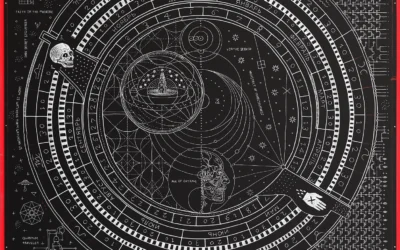


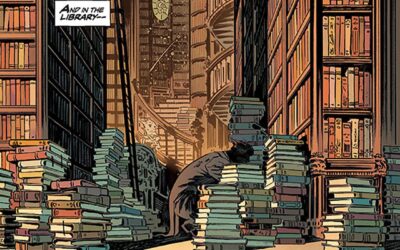

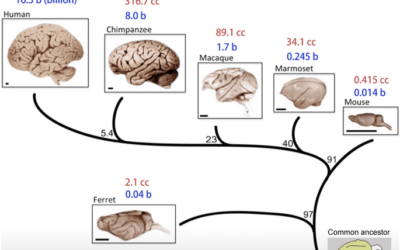
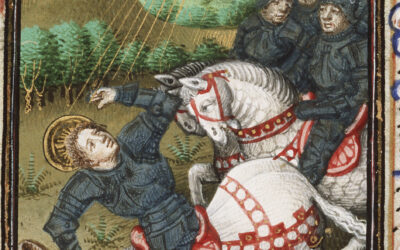
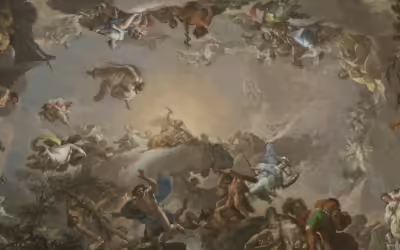



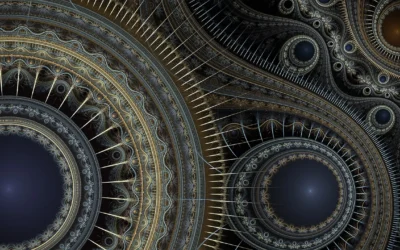
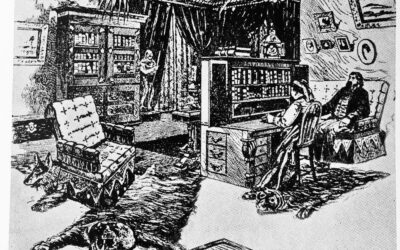

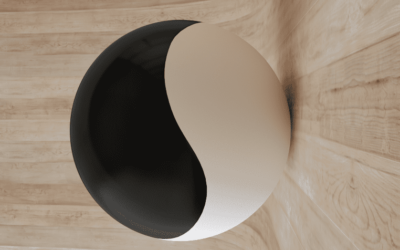
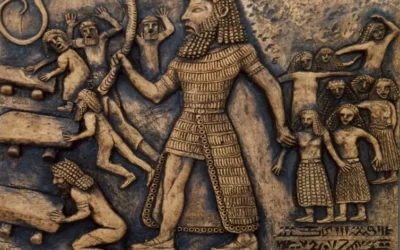

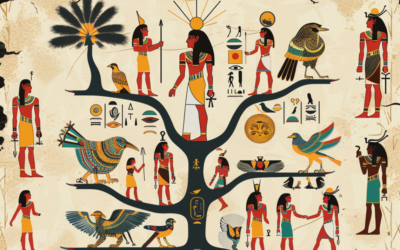
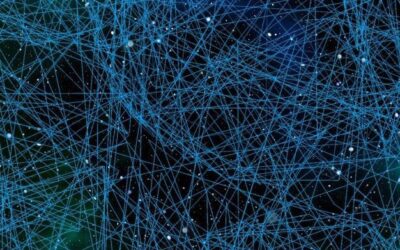
0 Comments